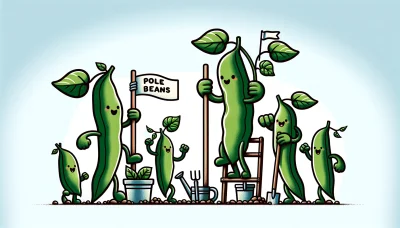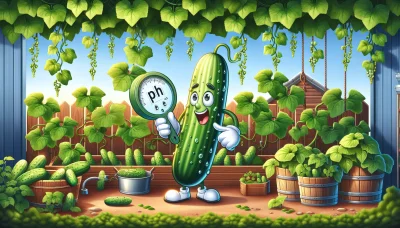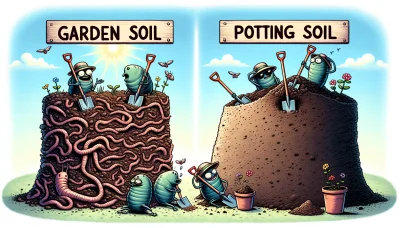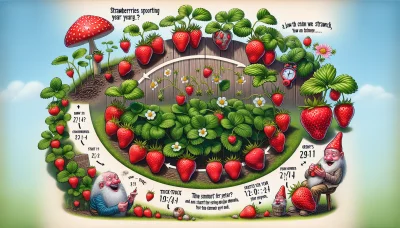How to eat a rambutan Quiz
Test Your Knowledge
Question of
How to Eat a Rambutan: A Gardener's Guide
The rambutan, with its hairy exterior and sweet, juicy flesh, is a tropical fruit that has captured the curiosity of gardening enthusiasts around the world. Originating from Southeast Asia, this exotic fruit not only adds a unique flair to any garden but also offers a delightful treat for those who grow it. Understanding how to properly eat a rambutan can enhance the experience of enjoying this fruit, making it a rewarding addition to the repertoire of any avid gardener.
What is a Rambutan?
The rambutan is a tropical fruit that is native to Southeast Asia, particularly found in regions like Malaysia, Indonesia, and the Philippines. It is recognized for its distinctive appearance, featuring a hairy or spiky red and green shell. Beneath this unique exterior lies a juicy, translucent flesh that is sweet and slightly acidic in taste, somewhat reminiscent of grapes. Rambutans grow on medium-sized trees that thrive in warm, tropical climates. These trees are a beautiful addition to any garden, not only for their exotic fruits but also for their lush, green foliage which can provide ample shade. The ideal growth conditions for a rambutan tree include well-drained soil, consistent moisture, and plenty of sunlight, making them a vibrant centerpiece in a tropical garden setting.
Selecting the Perfect Rambutan
For gardeners who grow or wish to grow their own rambutans, selecting the perfect fruit for consumption is crucial. A ripe rambutan is a delight, characterized by its vibrant color, specific texture, and distinctive smell. When choosing rambutans, first look at the color; a ripe rambutan will have a bright red or yellow skin, depending on the variety. This coloration is a clear indicator that the fruit is ready to be enjoyed. Next, assess the texture. The spiky "hairs" on the fruit should be firm but not too hard; they should yield slightly under gentle pressure, indicating the fruit inside is juicy and not overripe. Finally, don't forget to smell the rambutan. A ripe fruit will emit a sweet, floral fragrance. If the smell is overly fermented, it may indicate that the fruit is past its prime. By paying attention to these three characteristics, you can ensure you select the perfect rambutan every time.
Step-by-Step Guide to Eating Rambutan
- Select the right fruit: Look for rambutans that are bright red or yellow in color, depending on the variety. The spiky "hairs" should be firm and not too brown at the tips.
- Wash the fruit: Before peeling, wash the rambutan under running water to remove any dirt or residues from its surface.
- Peel the rambutan: Make a cut in the skin around the middle of the fruit with your fingers or a small knife. Be careful not to cut too deep and hit the flesh.
- Open the fruit: Hold the fruit with both hands, and gently twist or pull apart the two halves of the skin to reveal the white, juicy flesh inside.
- Remove the seed: Take a bite of the flesh, then gently separate it from the large, oval seed in the center. Avoid biting into the seed, as it can be bitter.
- Enjoy: Enjoy the sweet and slightly tangy taste of the rambutan flesh. You can eat it as is or add it to fruit salads, smoothies, or desserts for an exotic touch.
- From the garden: If you're lucky enough to enjoy rambutan directly from the garden, try eating it freshly picked. The natural warmth from the sun can enhance its flavors, making it even more delicious.
Storing Rambutans
For those lucky enough to harvest rambutans directly from their garden, or for those who purchase them fresh, proper storage is key to maintaining their unique taste and freshness. Rambutans are best kept in a cool, dry place if they're to be consumed within a few days. However, for longer storage, placing them in a perforated bag in the refrigerator can extend their freshness for up to two weeks. It's important to avoid washing them until you're ready to eat, as excess moisture can accelerate spoilage. By following these simple storage tips, you can enjoy the exotic flavor of rambutans at their best.
Health Benefits of Rambutans
- Rich in Vitamin C: Rambutans are an excellent source of Vitamin C, which is crucial for immune system function, skin health, and the absorption of iron from your diet.
- High Fiber Content: The high fiber content in rambutans helps promote a healthy digestive system, reducing the likelihood of constipation and promoting regular bowel movements.
- Antioxidant Properties: Rambutans contain antioxidants such as vitamin C, gallic acid, and epicatechin, which help fight free radicals in your body, reducing oxidative stress and lowering the risk of chronic diseases.
- Low in Calories: For those monitoring their calorie intake, rambutans are a low-calorie option that can help in weight management efforts.
- Contains Essential Minerals: They are a good source of essential minerals such as iron, calcium, and phosphorus, which are vital for bone health, blood circulation, and maintaining healthy blood pressure levels.
- Hydration: With their high water content, rambutans can help keep you hydrated, especially important in hot climates or during physical activity.
Given these nutritional benefits, incorporating rambutans into your garden not only diversifies your fruit collection but also contributes to a healthier diet.
Incorporating Rambutans into Your Garden
As we conclude our exploration of adding rambutans to your garden, it's important to remember that these exotic fruits require specific conditions to thrive. Rambutan trees flourish in warm, tropical climates, ideally where temperatures seldom drop below 10°C (50°F). To ensure the health and productivity of your rambutan tree, plant it in well-draining soil and in a location that receives ample sunlight. Regular watering is crucial, especially during dry spells, but be careful not to overwater as rambutan roots are susceptible to rot. With patience and proper care, incorporating rambutans into your garden can be a rewarding endeavor, offering not only a lush, tropical aesthetic but also the sweet reward of harvesting your own exotic fruits. Let this be the year you broaden your gardening horizons by welcoming the unique and delightful rambutan into your garden.












